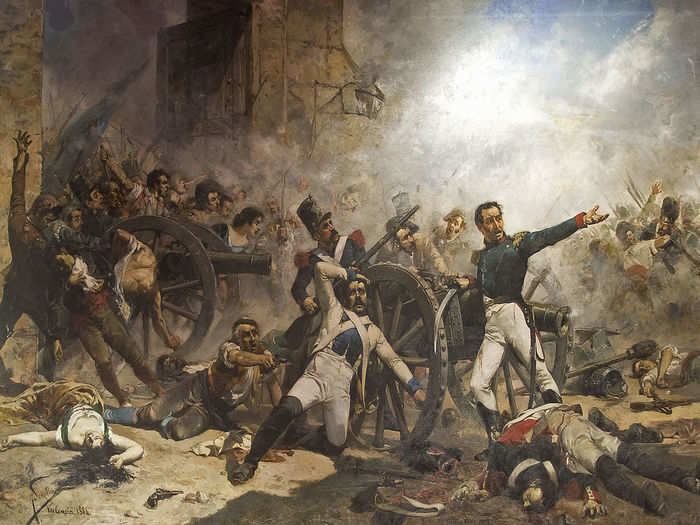- Home
- Military & Defense
- 9 wars that were technically ongoing due to quirks of diplomacy
9 wars that were technically ongoing due to quirks of diplomacy
Greece and Persia

Rome and Carthage

Declaration of war: Punic Wars, 264 B.C.
De facto peace: 146 B.C.
De jure peace: 1985
The conflict between Rome and Carthage was one of the defining moments of the creation of the Roman Empire. Between 264 B.C. and 146 B.C., the two empires fought a series of three wars known as the Punic Wars, which culminated in the Roman conquest of Carthage.
As Rome seized and destroyed Carthage, there was no need for the two countries to formally sign a peace treaty. However, that did not stop the mayors of Rome and Carthage from signing a treaty of symbolic friendship and collaboration in 1985. The sign of goodwill had been consistently floated until that point by both Tunisian and Italian governments.
Isles of Sicily and the Dutch Republic

Declaration of war: First Anglo-Dutch War, 1651
De facto peace: 1654
De jure peace: 1986
In 1651, the Dutch Republic declared war on the Council of the Isles of Scilly, a small island archipelago under the British crown. The islands were harboring pirates who interfered with Dutch shipping. However, the conflict between the Isles of Scilly and the Dutch Republic quickly was subsumed into the wider First Anglo-Dutch war.
Although the Dutch and British concluded their conflict in 1654, the Council of the Isles of Scilly were technically not included in the peace process. As such, the small islands and the Dutch remained at war until a Dutch ambassador visited the islands and formally concluded a peace settlement in 1986.
Huéscar and Denmark

Declaration of war: Peninsular War, 1809
De facto peace: 1814
De jure peace: 1981
In 1809, as the Napoleonic Wars were raging throughout Europe, the tiny Spanish hamlet of Huéscar declared war on Denmark. Denmark at the time was a staunch ally of the French Empire, and the town was eager to wage war against Napoleon and his allies.
However, the town's declaration of war was quickly forgotten — even by the town itself. The actual declaration was only rediscovered by chance in in 1981. Following the discovery, the Danish ambassador to Spain formally concluded peace with the town.
Lijar and France

Declaration of war: 1883
De jure peace: 1983
Like Huéscar, Lijar was another Spanish village that took it upon itself to unilaterally declare war. In 1883, Lijar's town council declared war on France following ill treatment of the Spanish King Alfonso XII by a French crowd.
Despite the declaration of war, Lijar and France never exchanged blows. And, in 1983, France sent its consul general from the Spanish city of Malaga to Lijar for a formal peace celebration between the would-be combatants.
Andorra and the German Empire

Declaration of war: World War I, 1914
De facto peace: 1918
De jure peace: 1958
Following the assassination of Austro-Hungarian Archduke Franz Ferdinand, the tiny European nation of Andorra was one of the first states to declare war on the German Empire in 1914. This was despite the fact that the nation had no standing army, according to the Australian Broadcasting Corporation.
Amazingly, despite Andorra's early declaration of war, it was one of the last states to declare peace. Sidelined at the Treaty of Versailles, which formally concluded World War I, the country did not sign a peace agreement with Germany until 1939, right before the outbreak of World War II.
Costa Rica and the German Empire

Declaration of war: World War I, 1918
De facto peace: 1918
De jure peace: 1945
Much like Andorra, Costa Rica was also not included in the Treaty of Versailles that ended World War I.
As such, the small nation remained technically at war with Germany throughout both World Wars, with peace only being achieved after Costa Rica was included on the Potsdam Agreement that ended World War II.
Allies of World War II and Germany

Declaration of war: World War II, 1939
De facto peace: 1945
De jure peace: 1991
In an ultimate display of the difficulties of ending a war, a final peace agreement between Germany and the Allied Powers was not reached until nearly 50 years after the war ended. Following the Nazi surrender and the end of the war in Europe, a formal peace treaty between Germany and the Allies was stalled by the Soviets.
As such, the US passed a resolution in 1951 that acted as a substitute for a peace treaty. This action was emulated by other Allied powers. It was not until German reunification was completed with the Treaty on the Final Settlement With Respect to Germany, put into effect on March 15, 1991, that Germany was ultimately able to gain full sovereignty, make alliances without foreign influence, and World War II ended with a formal peace treaty.
Principality of Montenegro and the Empire of Japan

Declaration of war: Russo-Japanese War, 1904
De facto peace: 1905
De jure peace: 2006
In 1904, the Principality of Montenegro declared war against Japan in support of Russia during the Russo-Japanese War. Due to the extreme distances separating the two countries, neither country saw combat with the other.
As such, when Russia and Japan signed a peace treaty, the Principality of Montenegro was not included. However, following Montenegro's secession from Serbia in 2006, Japanese officials visited the Balkan country to both recognize the country's independence and to deliver a letter declaring the official end of the war between the states.
Popular Right Now
Popular Keywords
Advertisement